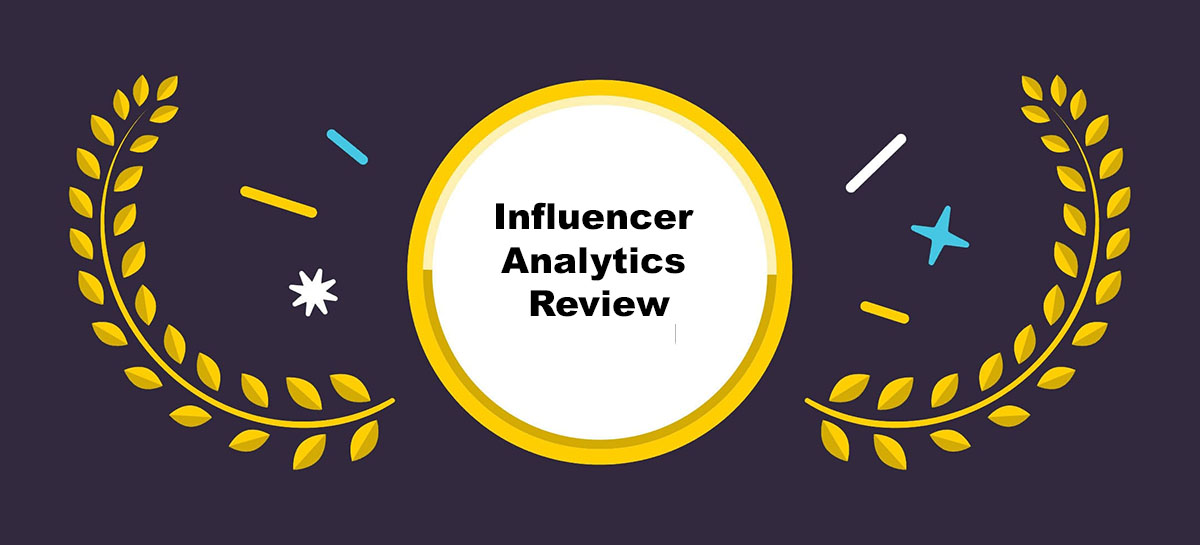Quick Verdict: Influencer Analytics isn’t your average influencer tool. It’s built for marketers who need to make fast, smart decisions backed by real data.
If you’re running serious campaigns — either in-house or for clients — it saves time, cuts through the fluff, and helps you avoid costly mistakes. It’s not cheap, but if you’ve ever wasted money on the wrong creator, you’ll see the value fast.
I’ve dealt with enough influencer marketing campaigns in the last ten years to know two things. One, influencers really can make an impact on your company’s growth. Two, finding and managing the right people is usually tougher than you’d think.
I still remember one of my first “big” campaigns, chasing down a YouTuber who promised us a review video. We wired the money, shipped the product, and then all we got is silence.
Three weeks later, the video finally went live, buried under three sponsorships for competing products.
Since then, I’ve learned to dig deeper. Who are their actual followers? Do they get consistent engagement, or is it all smoke and mirrors?
Can I compare what they charge against real CPMs, or am I just taking their word for it?
That’s why the Influencer Analytics app on the Semrush App Center caught my attention. It’s not your standard influencer marketplace.
It’s more of a data and intelligence tool. Think about how tools like Semrush or Ahrefs give you SEO data, this is the same kind of thing, just for influencers.
So, does it really work? Let’s find out.
What Is Influencer Analytics?
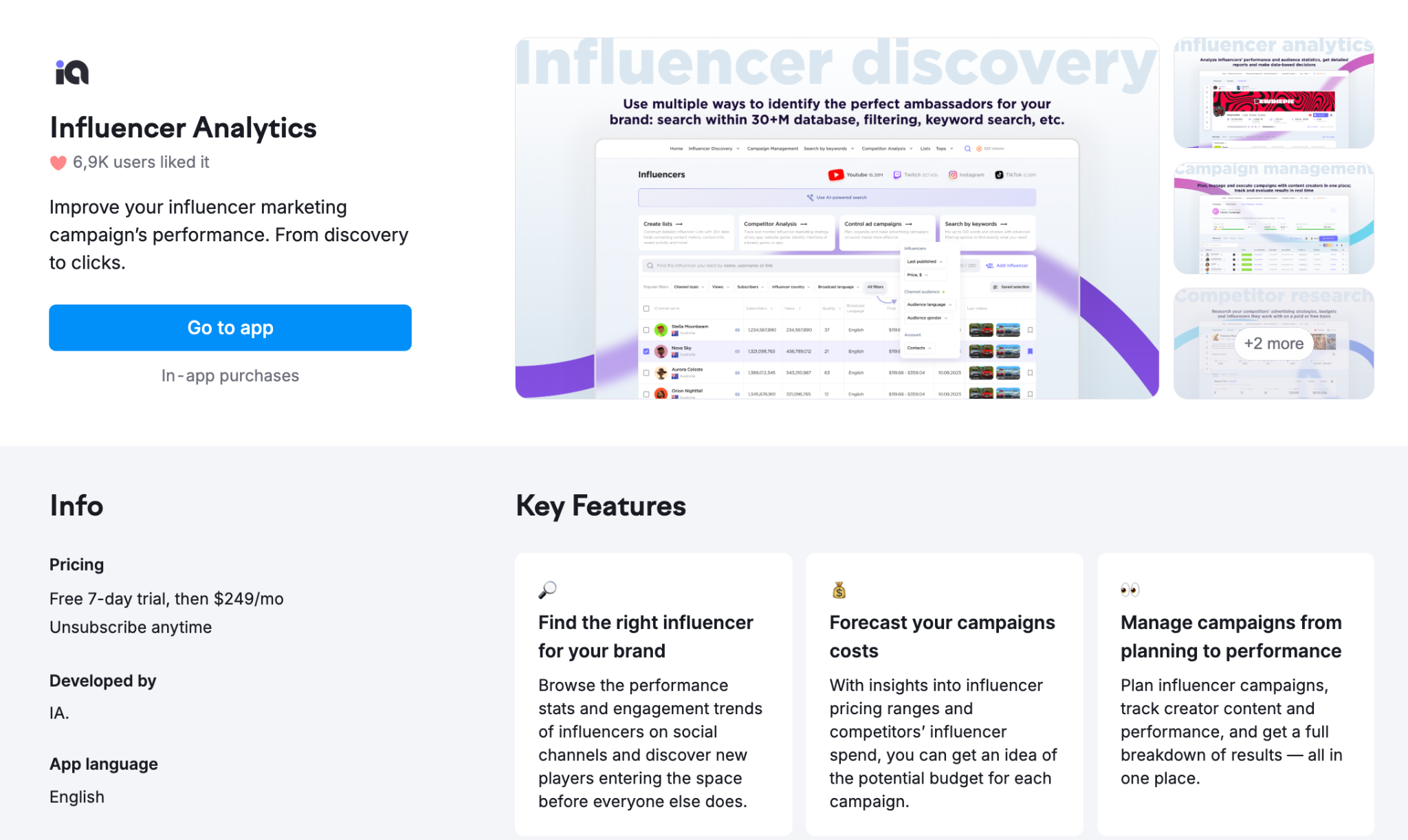
Influencer Analytics is an app in the Semrush App Center, designed to search for relevant influencers and content creators, and help you manage your marketing campaigns.
It’s exactly the kind of focused, data-driven, and insight-rich tool today’s marketing teams need. The app doesn’t just list influencers.
It helps you find the right influencer for your brand. It does that by drawing from a huge database of content creators, packed with information about all of their performance stats, like number of followers, engagement rates, and more.
In other words, it’s not for people who want to “play” at influencer marketing. It’s for people who need to make decisions with data.
You can:
- Find creators across YouTube, Instagram, TikTok, and Twitch.
- Dive into their stats instead of taking their word for it.
- Plan and track campaigns inside the platform (with an add-on).
- See what your competitors are doing, if you’re willing to pay extra.
The catch? It isn’t cheap. I’ll get to that later.
Influencer Analytics: Diving into the Key Features
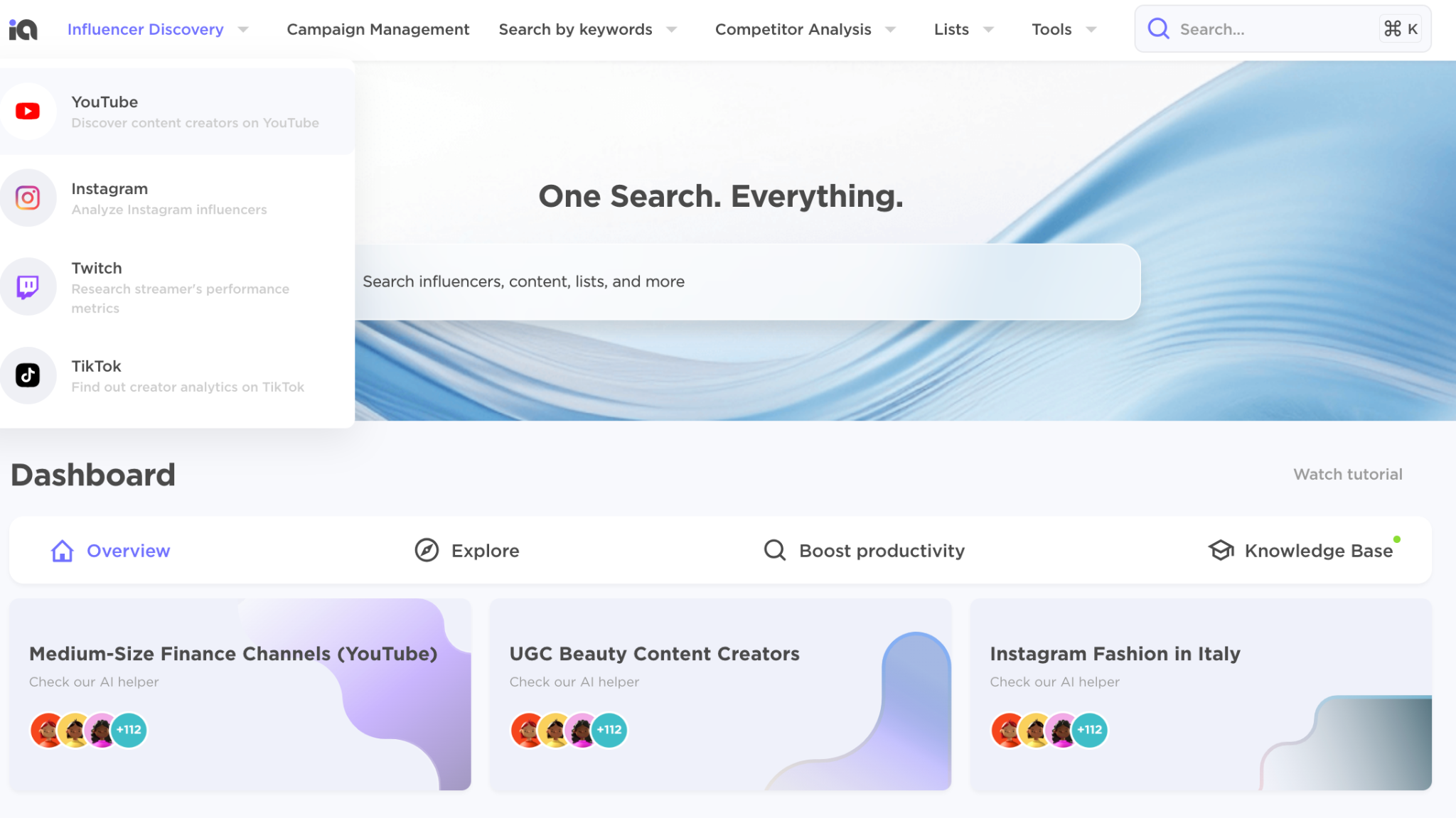
At its core, Influencer Analytics does four big things:
- Influencer Search: This is where you start digging. Filters for niche, country, language, audience size done in a way that feels usable. If you can’t be bothered with filters, the AI search helps out a lot.
- Performance Metrics: This is the meat. You click on a profile and you’re instantly seeing average engagement, CPMs, historical growth, demographics, the whole package, in a way that doesn’t feel confusing.
- Campaign Management: Here, you can set up folders, add influencers, upload drafts, track approvals, basically project management for influencer campaigns. If you’re running multiple clients at once, this is where it pays for itself.
- Competitor Analysis: This shows you which brands and apps are being mentioned by influencers, how often, and roughly what the budgets look like. It costs more, but it could be worthwhile for scaling brands.
Influencer Discovery & AI/Keyword Search
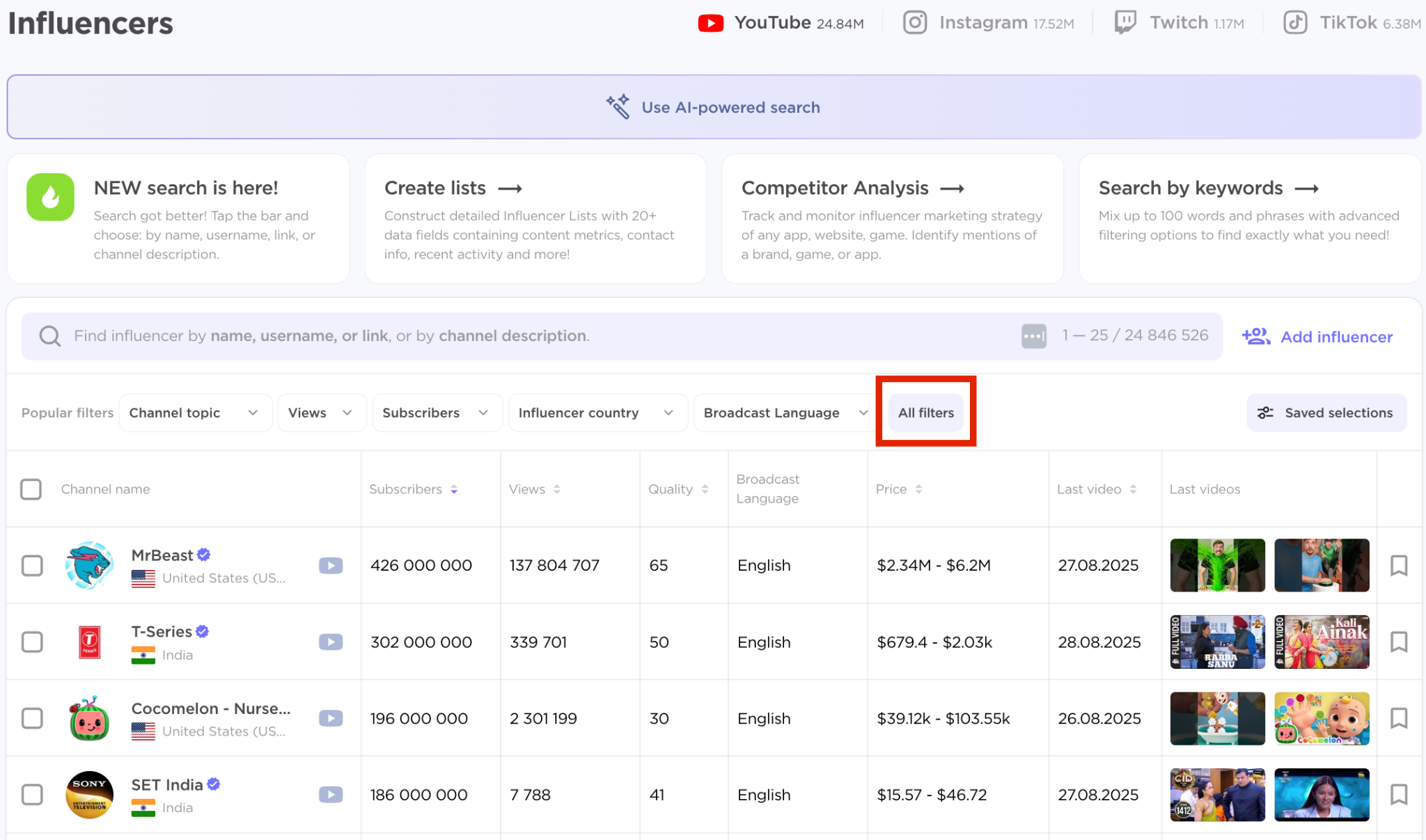
This is usually where influencer platforms start to fall apart for me. You open them up, type in “fitness,” and suddenly you’re looking at a random list of 10,000 profiles with nothing in common except the word “gym” in their bio. It’s overwhelming, and often useless.
Influencer Analytics does it a little differently. You can filter by country, language, audience size, engagement, and niche, but it’s not clunky.
I’ve tested tools where applying filters felt like a gamble (hit search, grab coffee, hope it doesn’t crash). Here, results come back fast and actually make sense.
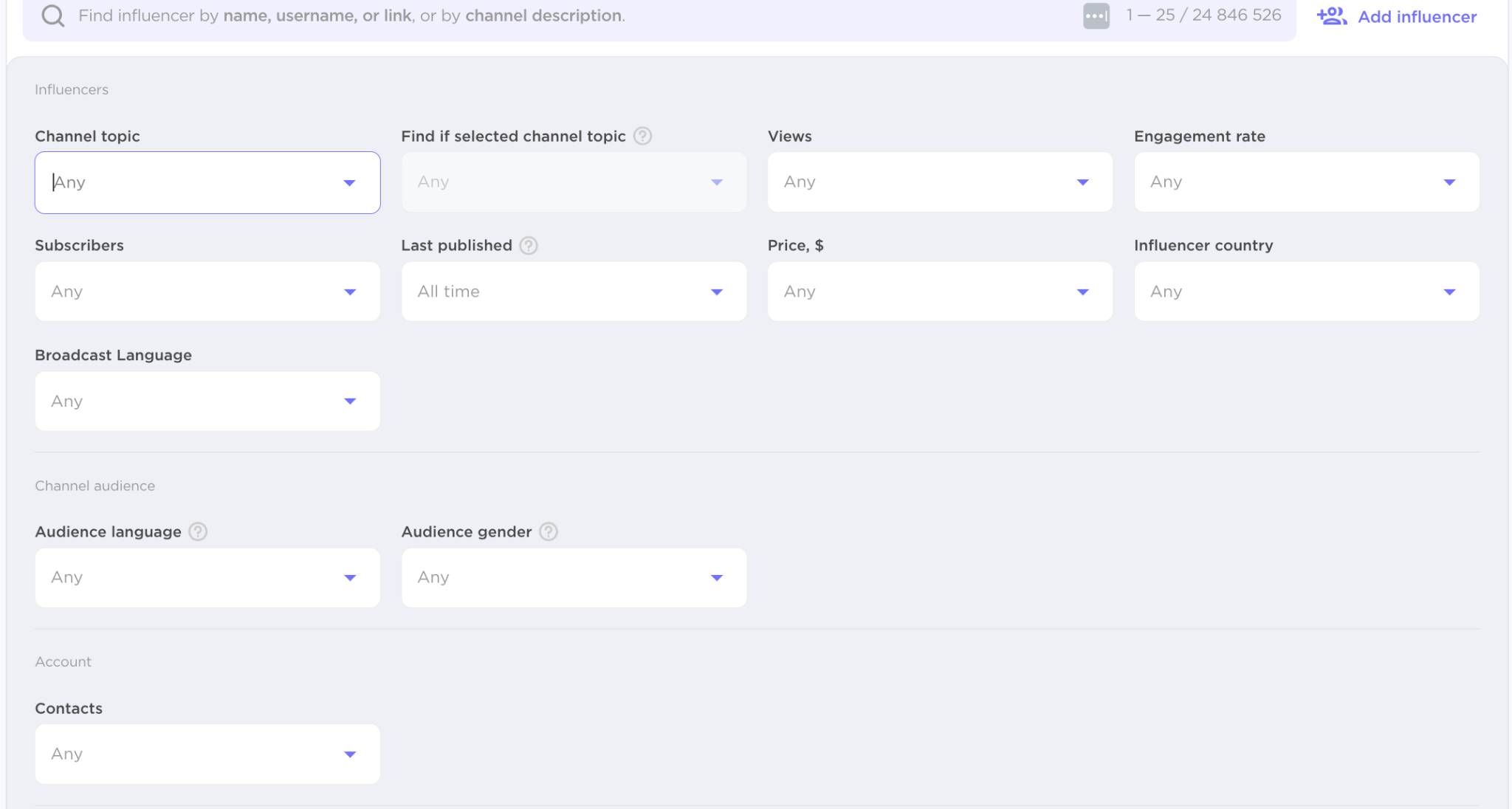
The real gem is the AI-powered search. I’ll admit, I rolled my eyes at first. Instead of juggling filters, you just type in plain language.
For one test, I typed: “YouTube gaming Spanish with female audience””. In seconds, it gave me a list that was spot on, with engagement stats right there to back it up.
If you prefer something old-school, there’s still keyword search.
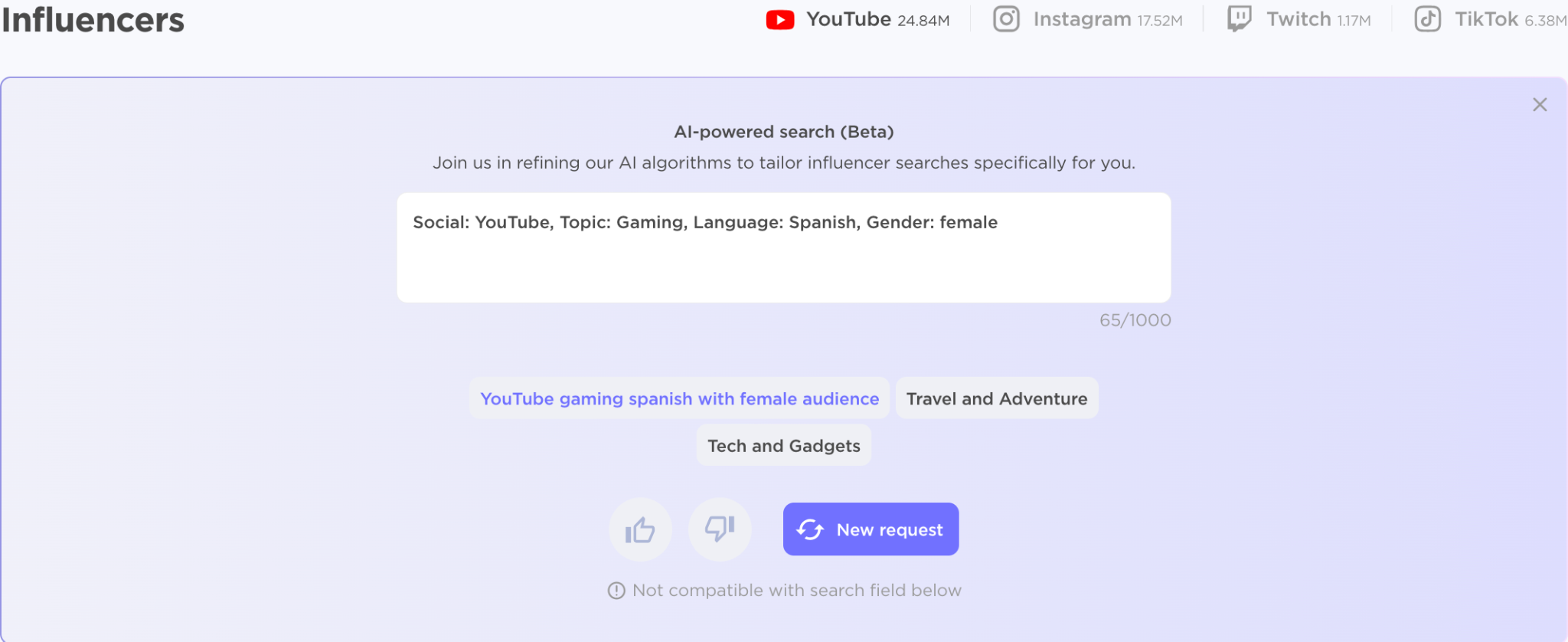
You can use that to find influencers with videos, posts, or profiles that include specific terms relevant to your brand.
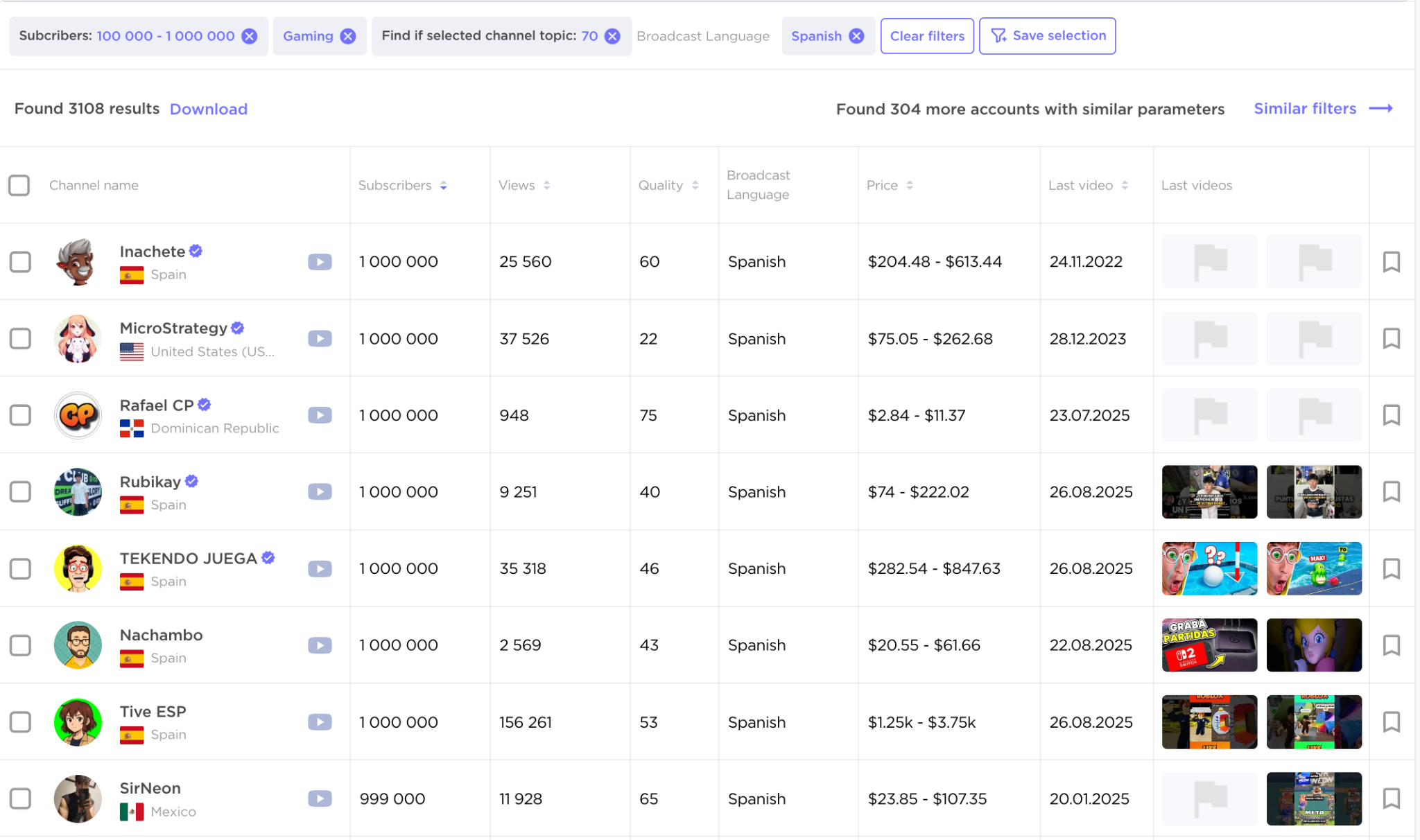
One feature I love (and honestly, don’t know how I lived without) is lists.
As you filter and search, you can bookmark interesting profiles or group them into custom lists. Working on a campaign for a sustainable clothing brand?
Build a list of “eco-conscious fashion influencers” and keep them separate from your “fashion influencers” list. You can even export the lists to Excel to share with your team or client.
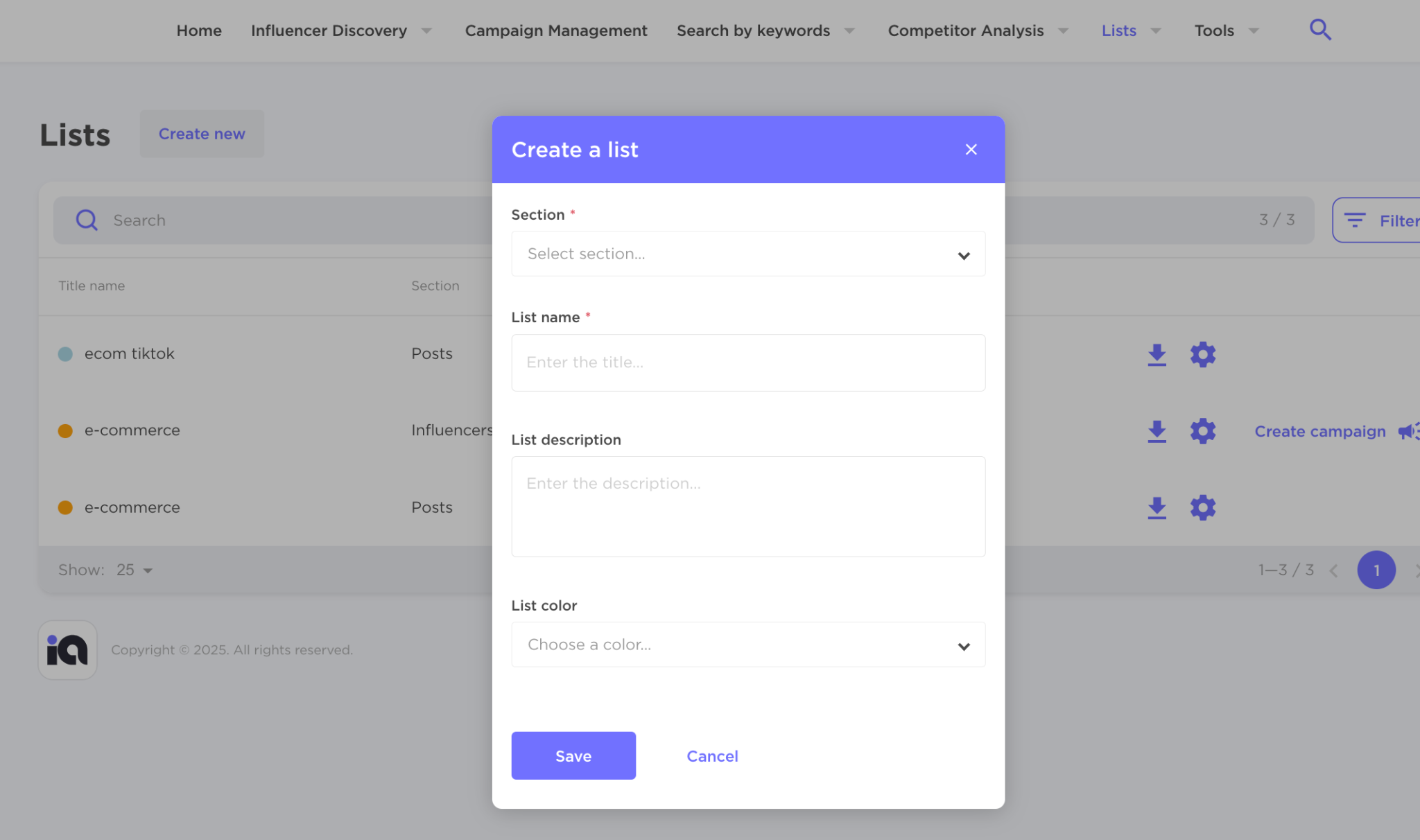
Performance Metrics: The Real Insights
Here’s the thing about influencer marketing: numbers lie all the time. I’ve seen Instagram accounts with 200,000 followers that can barely scrape together 500 likes per post.
I’ve also seen a Twitch streamer with “only” 10,000 followers drive more conversions in a week than a celebrity YouTuber did in a month.
That’s why I was relieved to see how Influencer Analytics handles performance metrics. It digs deeper into growth trends, engagement quality, CPMs, and even past brand mentions.
Let’s break it down by platform, because each one has its quirks.
YouTube Metrics

YouTube has always been tricky for me. A creator might have millions of subscribers, but if their last 10 videos are pulling a fraction of that, something’s off.
With Influencer Analytics, each YouTube profile comes with a dashboard of hard stats:
- Average views per video (a much better signal than sub count).
- Engagement rate, broken down by likes and comments.
- Channel quality score, which quickly tells you if an influencer’s engagement matches their audience size.
- Estimated integration costs and CPMs so you don’t walk blind into negotiations.
The part I really liked was the growth history. You can see subscriber and view counts over time, which instantly reveals whether someone is steadily growing or coasting on old fame.
I tested this with a gaming channel I follow, and sure enough, their growth curve showed a big spike around 2020 and a flatline after.
That’s the sort of red flag I’d want before investing in them.
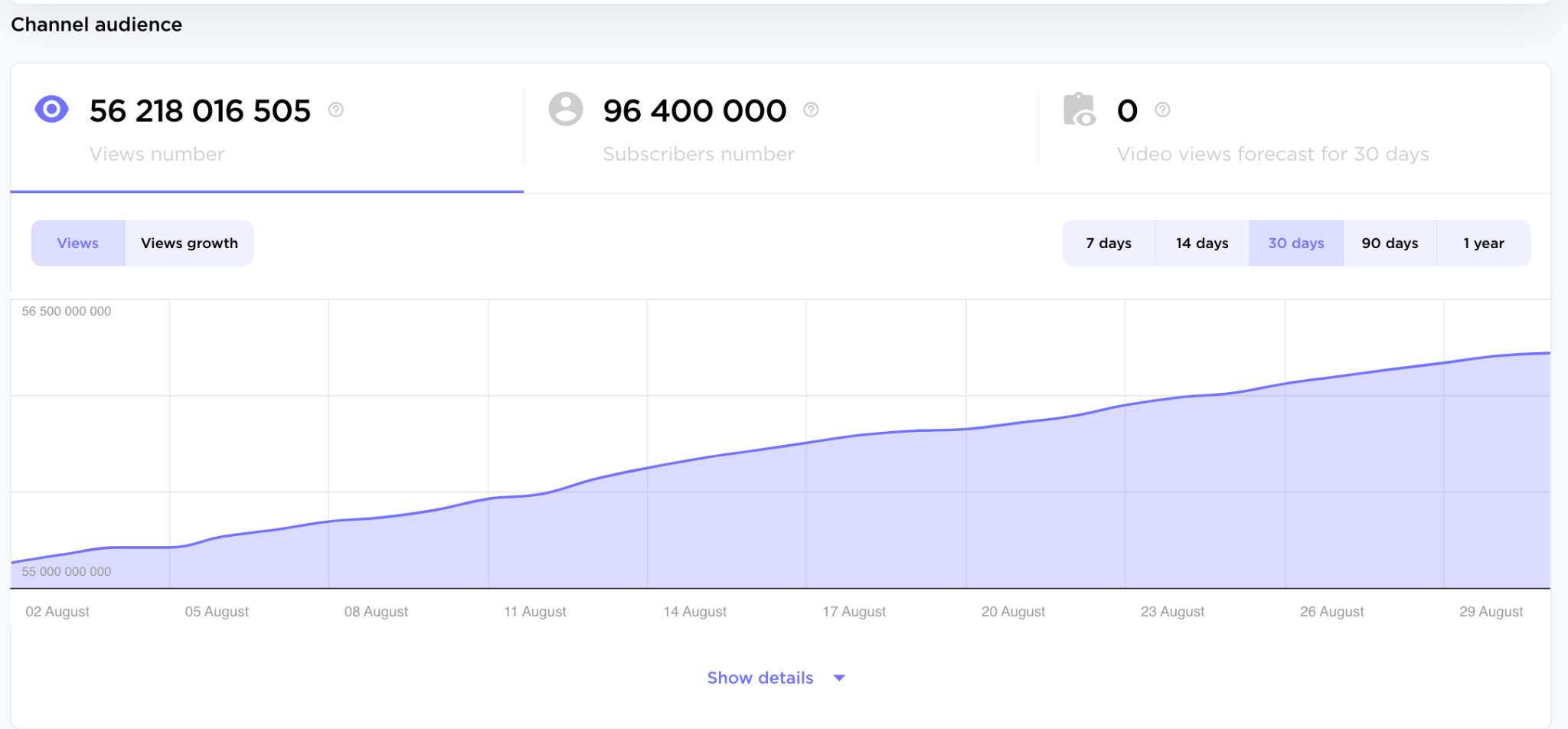
There’s also an Audience Demographics section, showing breakdowns by language and gender.
It’s not as granular as YouTube Analytics (obviously), but it’s enough to see whether an influencer’s reach aligns with your target.
Then there’s Content analytics, which shows you everything from the creator’s video release schedule, to their output frequency, and what kind of videos they produce.
You can even see which sponsored videos they’ve created for other brands.
Instagram Metrics
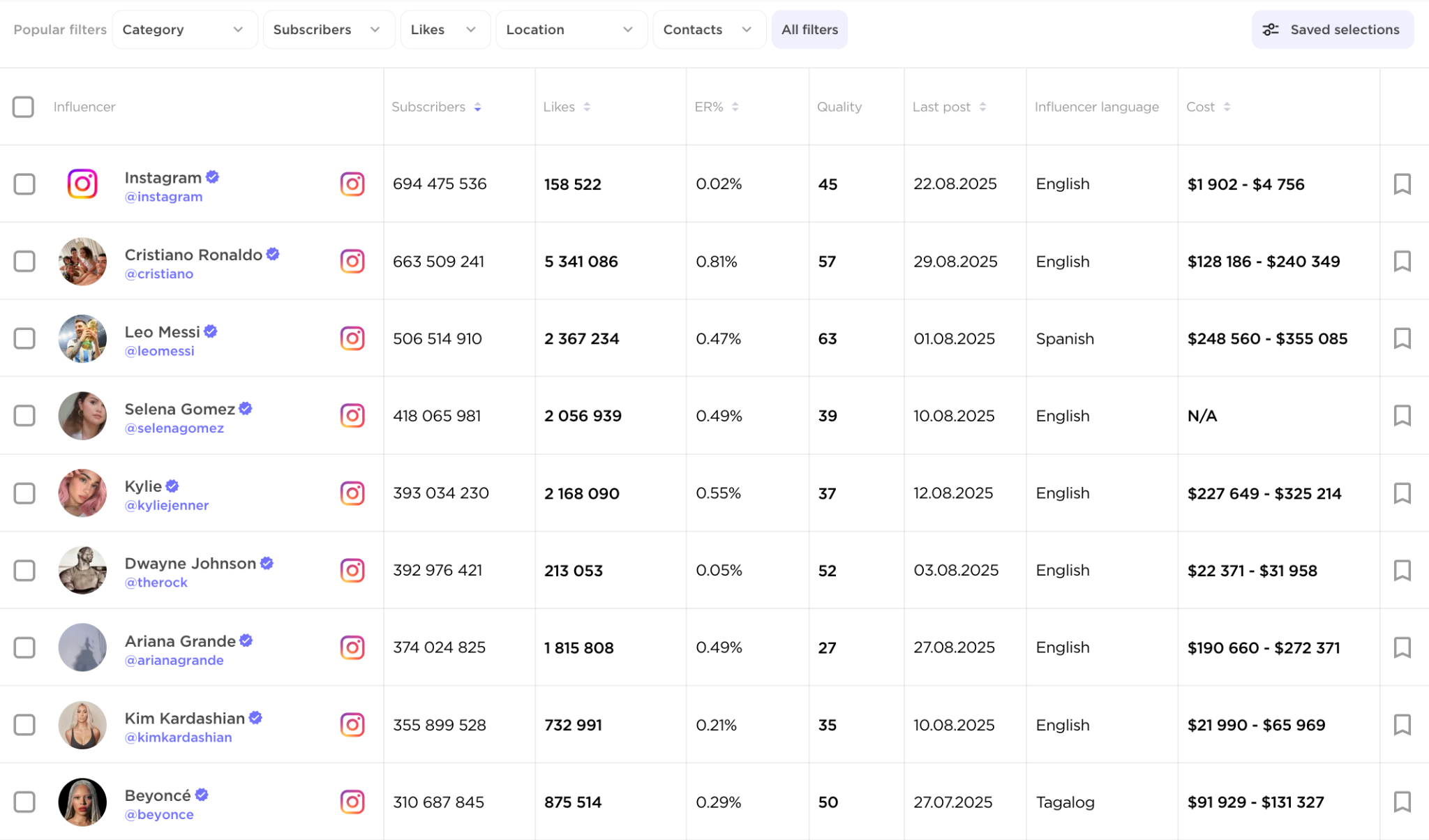
With Instagram the battle is separating real engagement from bot-fueled fluff. I’ve had brands send me “influencer shortlists” before that were basically graveyards of fake followers.
Influencer Analytics tackles this with some genuinely useful tools. On each Instagram profile, you’ll find:
- Expected views for posts and stories, not just follower counts.
- Engagement rate and likes/comments ratios (great for sniffing out suspicious patterns).
- Account activity: How much the account has grown over the last seven months.
There are tons of other details too. You can check audience credibility, based on the frequency of posts, activities, and subscriber behavior.
You can also track likes from non-followers, which is a good hint at impending growth.
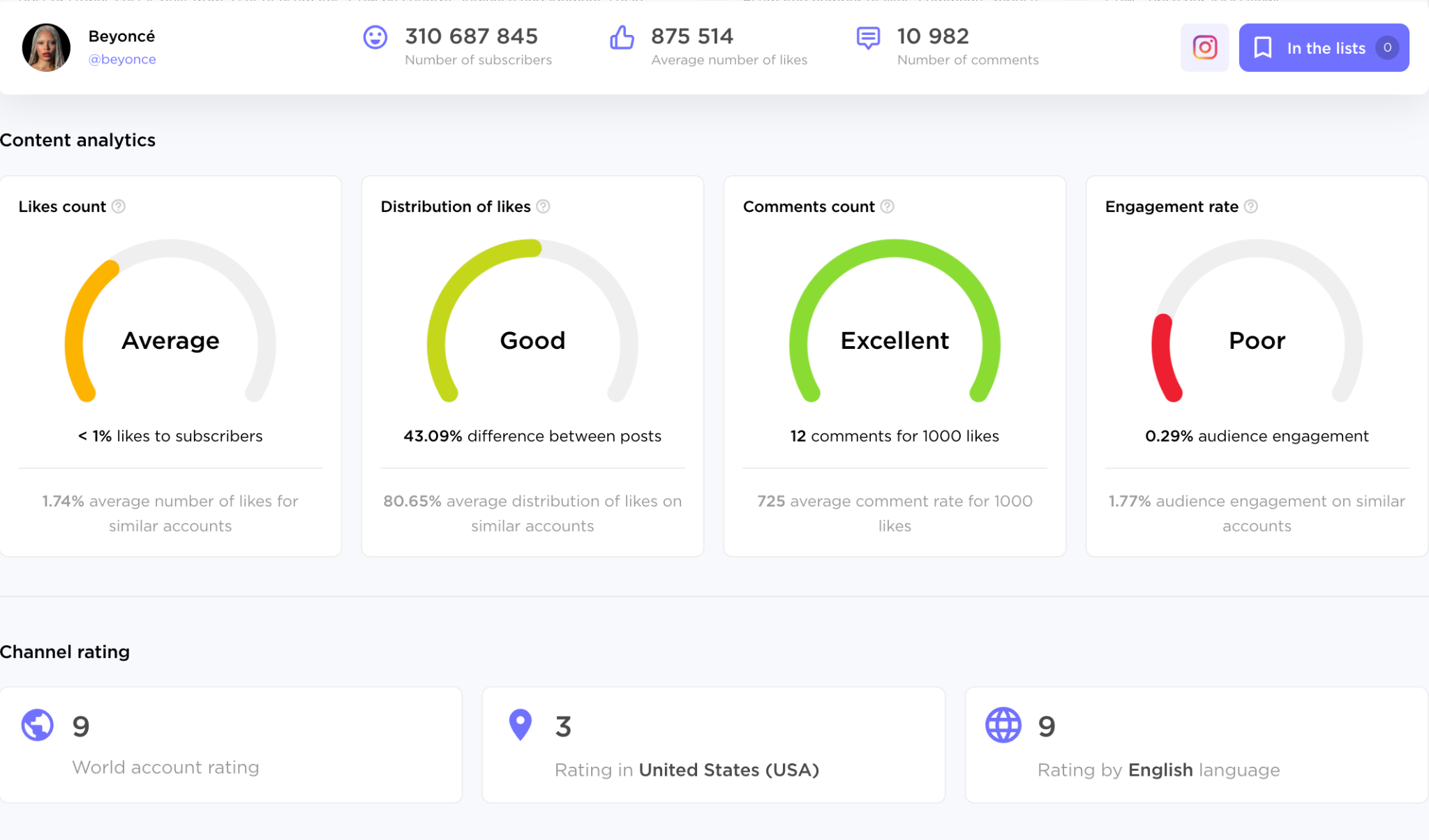
On top of that, you get cost estimates (CPM, integrations, reactions) and a content breakdown showing categories, hashtags, and mentions.
For example, if you see that a food influencer is heavy on #mealprep and #fitness, you instantly know where your healthy snack brand fits into the picture.
It’s not foolproof, estimated metrics are never 100% accurate, but it’s way better than going in blind or relying on whatever numbers an influencer decides to share in their media kit.
Twitch Metrics
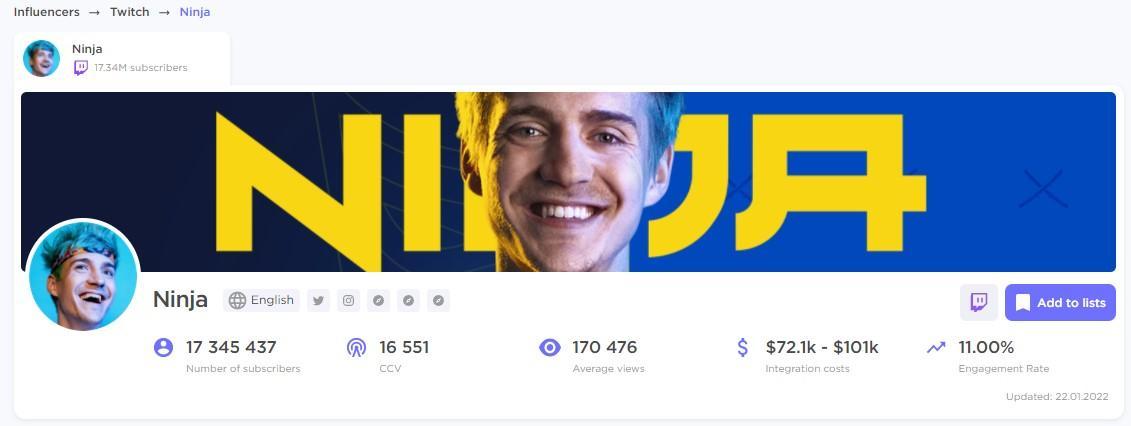
Twitch is where I’ve personally been burned the most. On the surface, live streams look amazing with thousands of viewers, active chats, and big personalities.
But when you actually partner with a streamer, the numbers don’t always translate. Sometimes you’re basically paying to sponsor someone’s hangout session, with little to show for it afterward.
That’s why I found the Twitch dashboards in Influencer Analytics genuinely refreshing. You get overviews of:
- Average concurrent viewers (CCV): the true test of whether people actually stick around.
- Stream frequency and total streams: are they consistent, or do they go live once in a blue moon?
- Engagement broken down by messages and reactions per stream.
- A channel quality score, which helps cut through vanity stats.
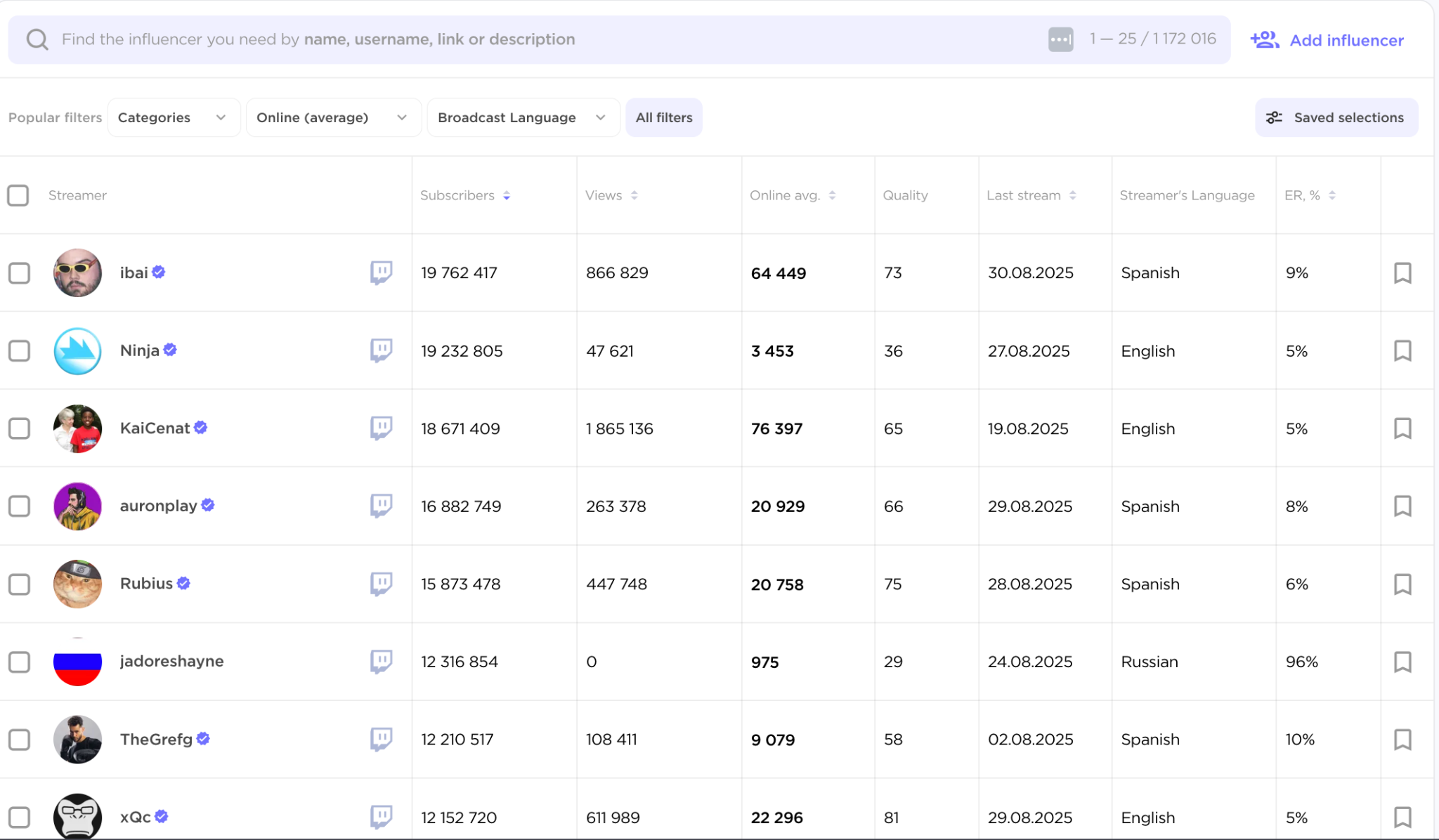
You also get calendar views of past streams, which I found surprisingly helpful.
One streamer I looked at had decent overall metrics, but when I checked the calendar, I noticed they hadn’t streamed consistently in months.
That would’ve been a costly oversight if I’d gone on CCV alone.

Like with the other platforms, there’s a cost section, too. You can see estimated CPMs and integration pricing, even broken down by region.
That matters a lot on Twitch, where audiences can skew heavily international. You can also use thee “Sites” and “Applications” tab to see whether certain products or companies were ever mentioned by a certain streamer. Handy.
TikTok Metrics

TikTok is the huge for influencer marketing right now. I’ve seen amazing results from TikTok focused campaigns, but the platform is volatile.
Creators rise and fall overnight, and engagement can be painfully inconsistent.
Influencer Analytics does a solid job of bringing some order to that chaos. Each TikTok profile gives you:
- Average views, likes, comments, and shares per video (a much better measure of impact than follower count).
- Engagement rate and a channel quality score so you can sanity check whether their numbers add up.
- Growth history – you can spot if they’re trending up, flatlining, or, in some cases, falling off a cliff.
- Audience demographics, including language and gender splits.
One feature I loved is the content analysis section. You can toggle between “latest” and “most viewed,” apply filters, or even keyword search within their uploads.
I tested this with a wellness brand in mind, and quickly found creators whose top-performing posts were all around “morning routines” and “healthy recipes.” That’s alignment you can actually use.
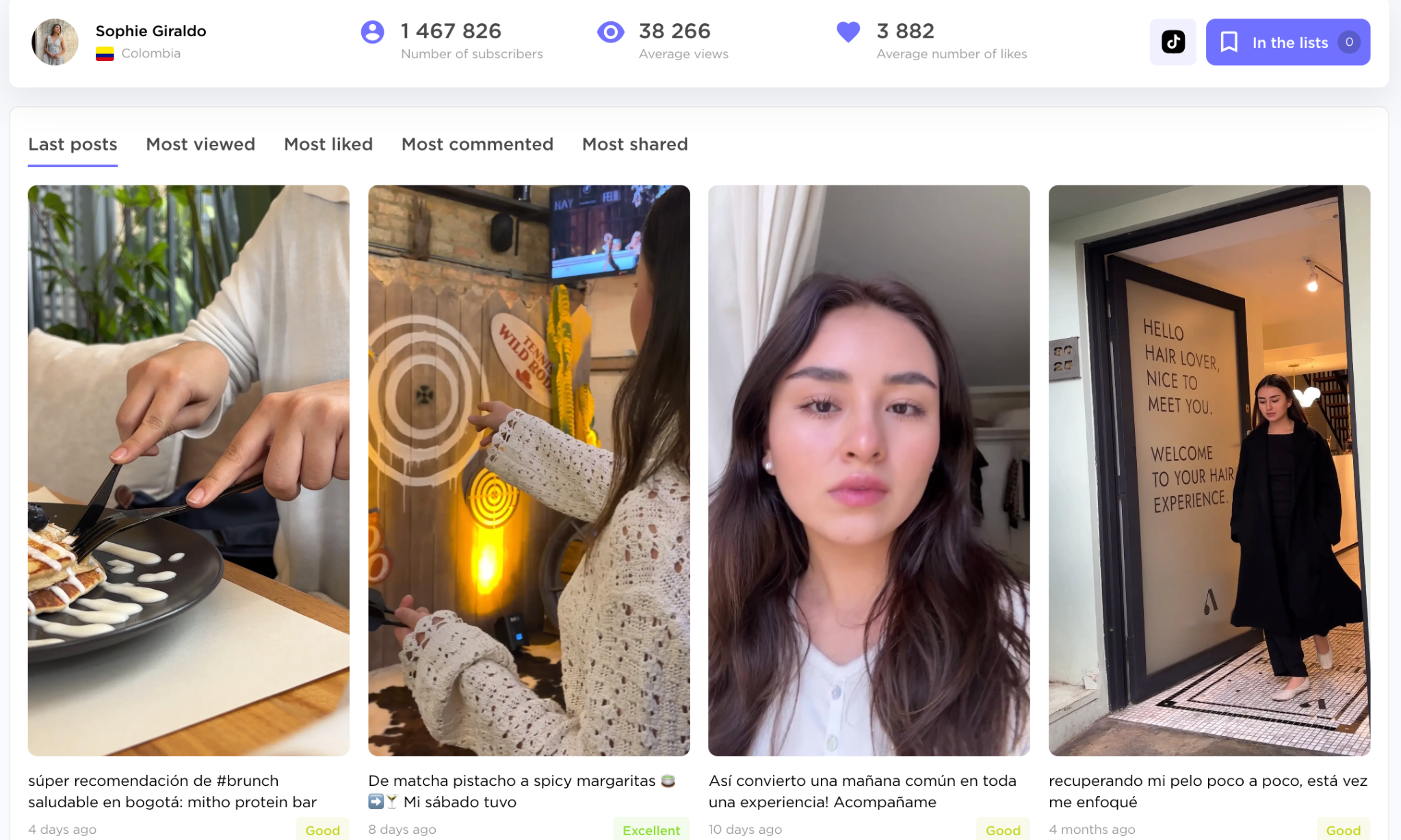
There’s also a post tagging system that rates posts from “poor” to “excellent.”
At first, I thought this was gimmicky, but when I compared a creator’s “excellent” posts against the “poor” ones, I noticed the tags were spot on.
The tool flagged posts with sharp engagement drops, which often correlated with off-topic or half-hearted content.
Campaign Management Features
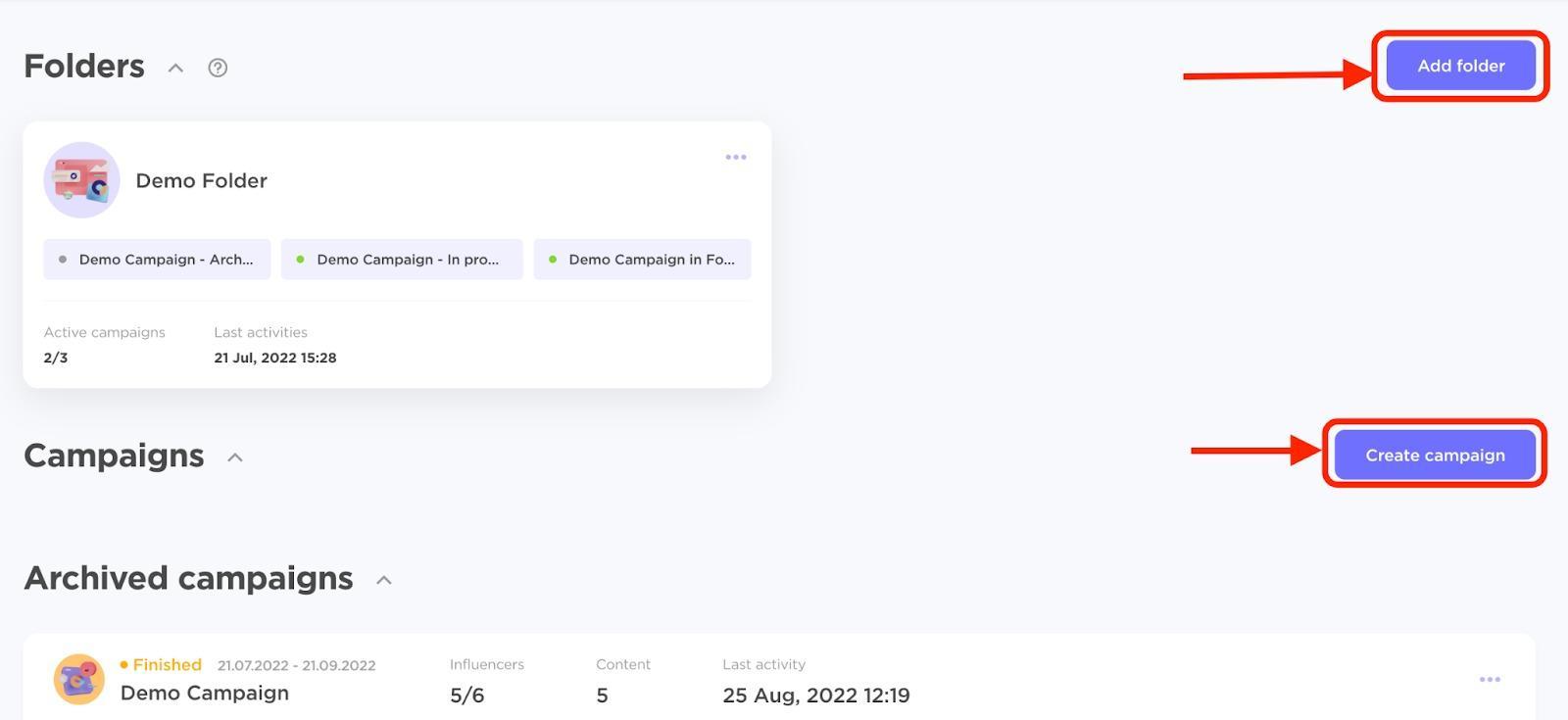
If you’ve ever run more than one influencer campaign at a time, you know it’s not simple.
One creator delivers early, another goes dark for two weeks, someone else sends a draft that looks nothing like the brief, and all of this is happening while your client is pinging you every other day asking for updates.
Influencer Analytics helps save your sanity. The Campaign Management tab gives you a dashboard where you can:
- Create campaigns and organize them into folders.
- Add influencers (from your saved lists or imported spreadsheets).
- Track statuses from “draft sent” to “client approved” to “content live.”
- Store all the content and reports in one place.
Basically, it’s project management baked right into the app. I liked that you can define your own statuses and formats.
For example, I set up a test campaign and added custom stages like “contract signed” and “awaiting payment,” which helped mirror my real-world workflow.
The reporting side is decent too. You can generate campaign-level reports showing performance across influencers, not just individual posts.
That’s a huge step up from the Frankenstein spreadsheets most agencies (including mine, in the early days) cobble together.
If you’re already deep into using a project management tool like Asana or Monday.com, you’ll notice Influencer Analytics doesn’t have the same level of flexibility.
But for influencer-specific workflows, it’s refreshingly straightforward.
Competitor Analysis
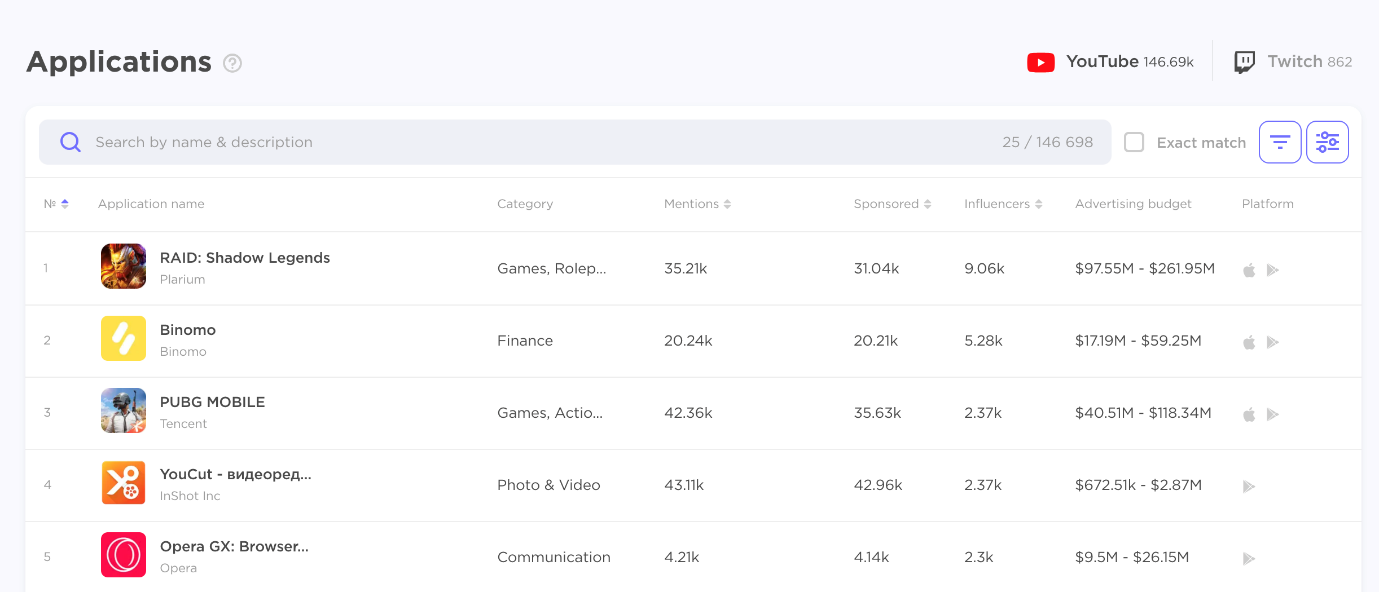
One of the most frustrating parts of influencer marketing is wondering what your competitors are up to.
You’ll be scrolling through YouTube or TikTok and notice the same brand popping up in multiple videos, but unless you’ve got time to stalk creators all day, it’s hard to piece together the full picture.
The Competitor Analysis feature in Influencer Analytics lets you peek over the fence and see which apps and brands influencers are talking about, how often, and with what kind of reach.
The tool splits into two main sections: Discover Apps and Discover Brands.
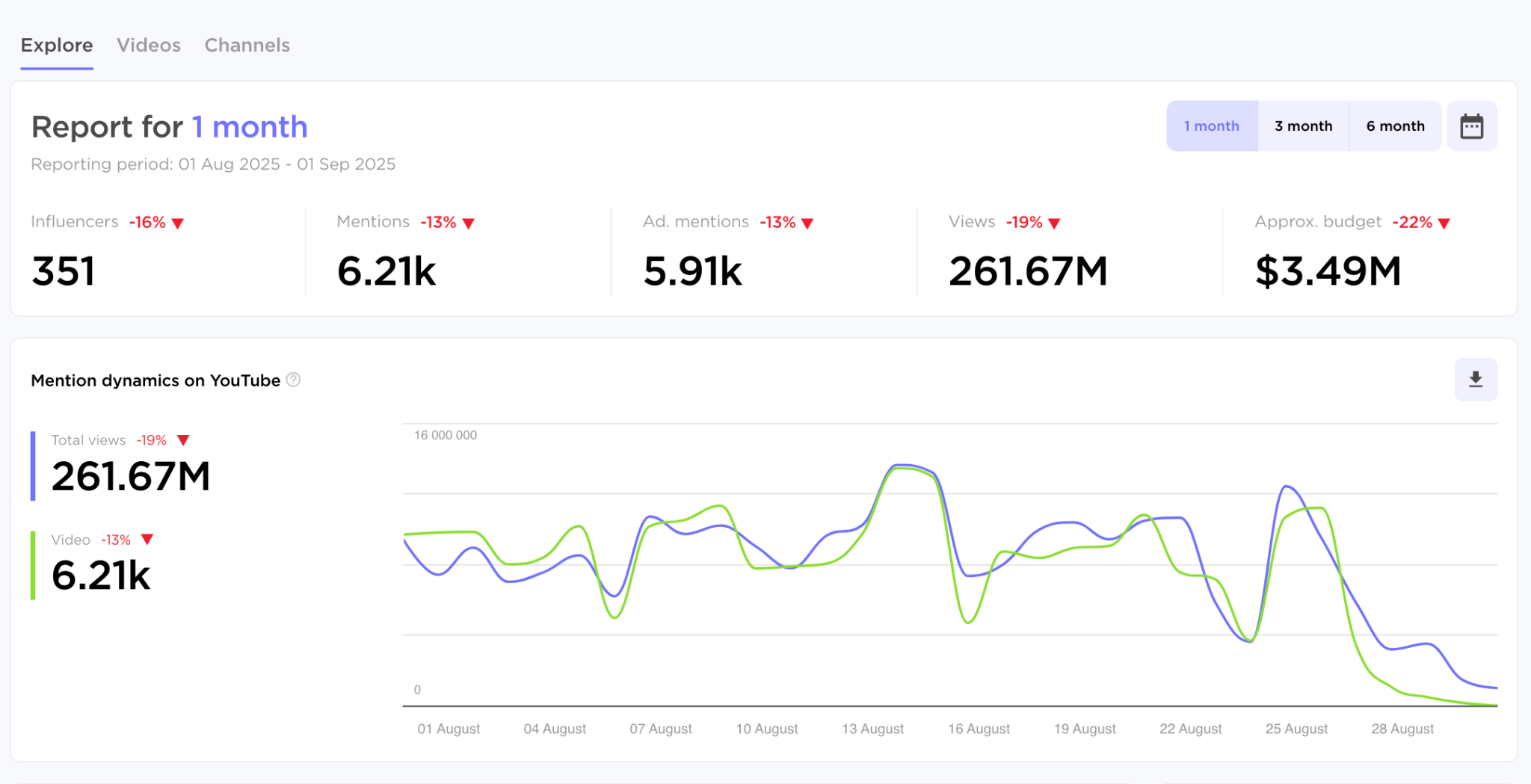
In Discover Apps, you get a rundown of mobile apps mentioned by YouTube influencers and Twitch streamers. Click on one, and you’re taken to a detailed report with stats like:
- Total influencers who’ve mentioned the app.
- Total views generated.
- Estimated advertising spend.
- Historical data showing how mentions have risen or fallen over time.
In Discover Brands, the setup is similar, but it focuses on websites instead of apps. Same deal: which influencers have mentioned them, how much reach those mentions got, and trends over time.
For me, the most useful part is the context. Seeing that a competitor is spending on influencer marketing is one thing.
Being able to break down where they’re spending, who they’re partnering with, and how effective those mentions look? That’s actionable.
It’s not flawless. Like the other modules, the data is estimated; this app isn’t inside influencers’ DMs negotiating deals. But you get a good starting point.
Pricing & Value for Money
I mentioned this above, but for clarity: Influencer Analytics isn’t cheap. But that doesn’t mean it’s not good value for money.
There’s a 7-day free trial, which is handy for testing everything out. After that, you also only have one plan to choose from, so there’s no confusion.
This plan costs $249 per month, but it comes with just about everything a company serious about influencer marketing could want.
You get the influencer discovery features for YouTube, Instagram Twitch and TikTok.
There’s campaign management included, and unlimited influencer keyword analytics. Even the competitor analysis feature gives you a top five view of your major rivals.
If you do want to dive a little deeper, you can get more data on extra competitors for an extra $129 per month – but not every brand is going to need that.
So, cheap: no. But this isn’t a tool for dabblers or side hustlers just trying to score a free product collab.
But if you’re managing influencer campaigns at scale, either for your own brand or for clients, it’s not unreasonable.
To put it in perspective, I’ve seen brands waste $5,000 on a single influencer campaign that flopped because nobody checked engagement quality beforehand.
A tool like this could easily prevent that mistake, which makes the subscription look like small change.
Verdict: Who Should Use Influencer Analytics?
This tool won’t appeal to everyone. If you’re a solo creator dabbling in influencer marketing or a small brand just testing the waters, the price alone will knock you out.
You don’t need a $300+ monthly platform to find your first two TikTok partners. For that stage, personal outreach and a bit of manual research will do the job.
But if you’re running consistent influencer campaigns, managing multiple clients, or investing real budget into ecommerce growth, then this tool is worth a hard look.
Here’s why:
- For agencies, it cuts down hours of manual vetting and gives you data you can confidently show clients.
- For brands, it brings structure. Instead of juggling spreadsheets, screenshots, and back-and-forth emails, you’ve got discovery, analytics, and campaign tracking all under one roof.
- For competitors in crowded niches, the add-on analysis module is extremely useful. Being able to peek into who your rivals are partnering with and how much traction they’re getting is a huge advantage.
It’s not perfect. The token system can feel restrictive, and the add-on pricing stacks up fast.
I also wouldn’t rely solely on the estimated cost numbers, as they’re a starting point, not gospel. You still need to negotiate and do your homework.
But overall? Influencer Analytics is an excellent tool. If you really want to take your influencer marketing up a notch, I’d at least give it a test run.
